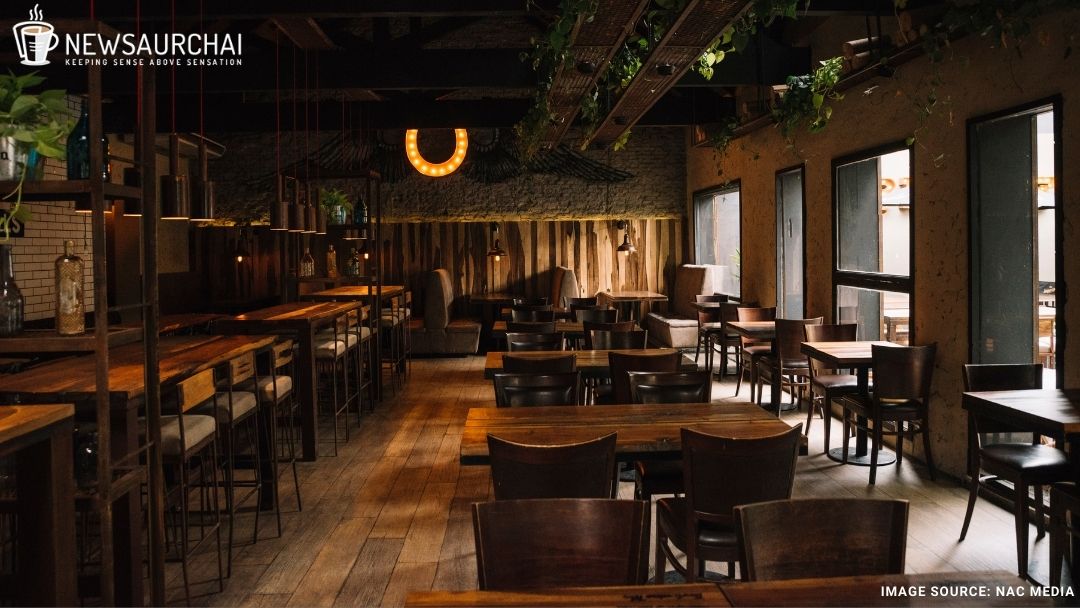
The people of India express their culture through cuisine and celebrate every little occasion with a splash of food and drink. The participation of food in culture makes restaurants and small eateries an integral part of the social setting in India. Before the pandemic took over the world, one might have presumed, and rightly so, that restaurants in India will never face a setback. However, the onset of the pandemic brought with it a stringent set of government-imposed restrictions on various everyday events. It finally leads up to a complete shutdown of economic and social activity as of March 2020. The Food & Beverage (F&B) industry, which thrives on social gatherings, was one of the worst affected. Most restaurants in India and globally usually run on a hand-to-mouth cash flow. It accounts for almost 3% of the Indian GDP, being one of the largest employers in the service sector. It has over 70 lakh people working in eateries ranging anywhere from a roadside stall to a palatial seven-star establishment.
The National Restaurant Association of India (NRAI) calculates the cumulative losses of nationwide restaurants to be as high as INR 1 lakh crores. The losses are owed to the pandemic pushing more than 22 lakh people over to unemployment. Additionally, concerns over sanitation and health slowed down consumption from restaurants and hotels massively. While dining-out was entirely out of the question, ordering-in was reduced by more than 50%. As of May 2020, some eateries were operating at only 30% of their original business, and many went into complete hibernation. Clubs and bars saw a vanished customer base and faced the same fate.
CIM Shri @PiyushGoyal, on behalf of 80 million traders, we @CAITIndia, demand immediate issuance of a new #pressnote . Despite your unflinching stand, @DIPPGOI has failed to issue press note allowing foreign #ecommerce giants to destroy India’s #ecommerce & #Retail trade. pic.twitter.com/BufTxx8onL
— Praveen Khandelwal (@praveendel) May 17, 2021
As the lockdown ensued, many restaurants faced tremendous losses. A new worry took over the gastronomic sector as home-cooked meals, and cooking experiments became a trend online. Anyone with a little free time on their hands was trying out new recipes and engaged in the worldwide phenomena of kitchen experiments. Soon it became a normal part of life to eat at home every day, and restaurants were a thing of the past. Restauranteurs’ dilemma was twofold: consumers would now either long for outside food or make eating-out a rarity because of the healthy and conscious home-cooking.
To make up for losses in the pith of the pandemic, many businesses offered their menus on online ordering apps such as Swiggy and Zomato. These apps even welcomed grand restaurants from hotels like Radisson, ITC Maurya, and Shangri-La. This frenzy pushed businesses to be innovative and use technology to their advantage.
NRAI seeks support from landlords amid COVID-19 second wave.https://t.co/LfKeZRVwOU pic.twitter.com/ngdsdRceP2
— NRAI (@NRAI_India) May 20, 2021
Restaurants took to smart online marketing strategies on social media. Some spread awareness about health and hygiene, while some uploaded videos on customer-favourite recipes to increase visibility and engage in consumer relations. The pandemic also saw the emergence of delivery-only restaurants that were an entirely new concept in the country. The NRAI shifted its focus to digital platforms to offer vouchers, loyalty programs, appropriate food delivery, and contactless payment options to diners to keep the businesses alive.
However, the F&B industry breathed a sigh of relief when India launched its Unlock process in the latter half of 2020. Yet, the restaurants practised social distancing and operated at 50% of their seating capacity. Scannable barcodes containing menus, online and contactless payments, social distancing, temperature checks, sanitisation, and service staff clad in PPE kits were now mandated at every eatery. These regulations and precautions made the experience safe and comfortable for the diners. The months following November 2020 saw some policy changes in many states. These changes helped the F&B industry pick up the pace again, lifting curbs that restricted working hours.
In a sensitive gesture, CM Shri @vijayrupanibjp decides to waive-off property tax as well as fixed charge in electricity bills of hotels, resorts, restaurants and water parks affected by Corona pandemic for one year i.e, from April 1, 2021 to March 31, 2022 in the State. pic.twitter.com/0Cs1apQKTy
— CMO Gujarat (@CMOGuj) June 7, 2021
As the sector experienced significant business growth going into early 2021, the second wave of infections halted this recovery. With India clocking a sudden surge of more than 1.5 lakh cases per day in April 2021, a fresh set of restrictions and lockdowns came into place. It created an aura of an eerie déjà vu, digging up bitter memories from the previous year. Night curfews, reduced seating capacities, and rising concerns over health and sanitation pushed the industry into a corner yet again.
Being a non-essential service, the F&B industry has faced an extreme and treacherous journey in the past year. It has lost lakhs of employees and revenue. The health hazard of Covid-19 can prove disastrous for the restaurants which are barely making ends meet. If the situation continues till late 2021, it will cause many more shutdowns, leaving hundreds more unemployed. Such deep losses will take years to recuperate.






One Comment